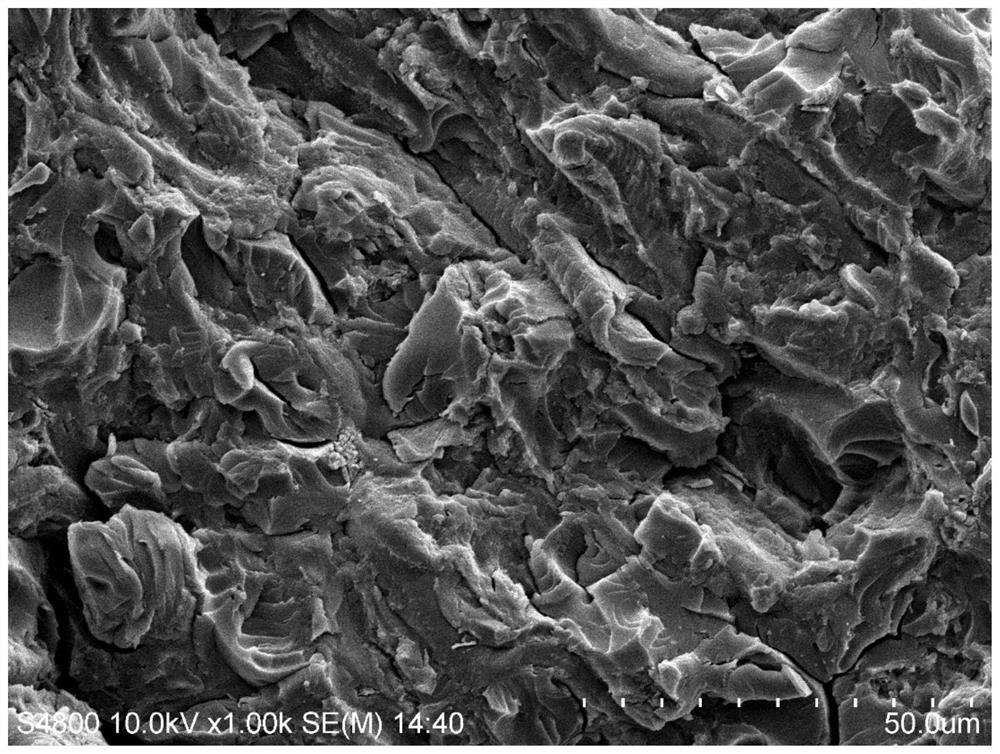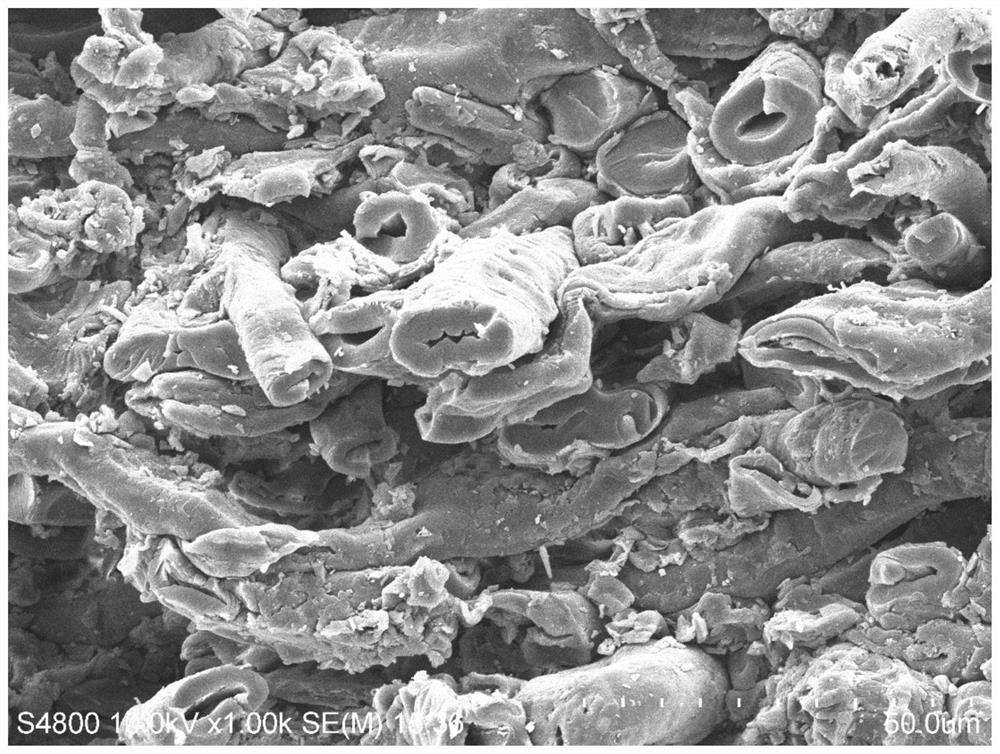Glue-free fiber plasticized plate and preparation method thereof
A technology of fiber and wood fiber, which is applied in the field of glue-free fiber plasticized board and its preparation, can solve the problems of high water absorption expansion rate, low accessibility of hydroxyl groups, and low static bending strength of glue-free fiber board, and achieve water swelling The effect of low rate and high static bending strength
- Summary
- Abstract
- Description
- Claims
- Application Information
AI Technical Summary
Problems solved by technology
Method used
Image
Examples
Embodiment 1
[0066] Step 1): add 800mL of distilled water to a 1.5L beaker, weigh 50g of poplar fiber into the beaker, quickly add 40g of sodium periodate and 5g of isopropanol, and stir at room temperature for 4h in the dark. Filter and wash to neutrality to remove unreacted sodium periodate and isopropanol, and obtain dialdehyde-modified wood fiber after drying and equilibration.
[0067] Step 2): Weigh 40g of dry dialdehyde-modified wood fibers and place them in a constant temperature and humidity box. Obtain the moisture content of 9% by gravimetric method, and disperse the wood fibers with 9% moisture content evenly with a pulverizing disperser for later use.
[0068] Step 3): Put the evenly dispersed wood fibers into a pre-pressing frame with a size of 10cm×10cm for preliminary pre-pressing, and then put a thickness gauge of 3mm thickness between the two steel plates, and perform hot pressing at 75 ° C. The pressure was 15 MPa, and after maintaining the pressure for 5 minutes, the pr...
Embodiment 2
[0074] Step 1): add 800mL of distilled water to a 1.5L beaker, weigh 50g of poplar fiber into the beaker, quickly add 50g of sodium periodate and 5g of isopropanol, and stir at room temperature for 6h in the dark. Filter and wash to neutrality to remove unreacted sodium periodate and isopropanol, and obtain dialdehyde-modified wood fiber after drying and equilibration.
[0075] Step 2): Weigh 40g of dry aldehyde-based wood fibers and place them in a constant temperature and humidity box, obtain a moisture content of 10% by a gravimetric method, and use a pulverizing and dispersing machine to disperse the wood fibers with a moisture content of 10% evenly for use.
[0076] Step 3): Put the evenly dispersed wood fibers into a pre-pressing frame with a size of 10cm×10cm for preliminary pre-pressing, and then put a thickness gauge of 3mm thickness between the two steel plates, and perform hot pressing at 100°C. The pressure was 20 MPa, and after maintaining the pressure for 3 minut...
Embodiment 3
[0082] Step 1): Add 800 mL of distilled water to a 1.5L beaker, weigh 50g of Chinese fir fiber into the beaker, quickly add 50g of sodium periodate and 5g of isopropanol, and stir at room temperature for 8h in the dark. Filter and wash to neutrality to remove unreacted sodium periodate and isopropanol, and obtain dialdehyde-modified wood fiber after drying and equilibration.
[0083] Step 2): Weigh 40g of dry aldehyde-based wood fibers and place them in a constant temperature and humidity box, obtain a moisture content of 12% by gravimetric method, and uniformly disperse the wood fibers with a moisture content of 12% with a pulverizing and dispersing machine for later use.
[0084] Step 3): Put the evenly dispersed wood fibers into a pre-pressing frame with a size of 10cm×10cm for preliminary pre-pressing, and then put a thickness gauge of 3mm thickness between the two steel plates, and perform hot pressing at 80 ° C. The pressure was 15 MPa, and after maintaining the pressure...
PUM
| Property | Measurement | Unit |
|---|---|---|
| elastic modulus | aaaaa | aaaaa |
| elastic modulus | aaaaa | aaaaa |
| elastic modulus | aaaaa | aaaaa |
Abstract
Description
Claims
Application Information
 Login to view more
Login to view more - R&D Engineer
- R&D Manager
- IP Professional
- Industry Leading Data Capabilities
- Powerful AI technology
- Patent DNA Extraction
Browse by: Latest US Patents, China's latest patents, Technical Efficacy Thesaurus, Application Domain, Technology Topic.
© 2024 PatSnap. All rights reserved.Legal|Privacy policy|Modern Slavery Act Transparency Statement|Sitemap



